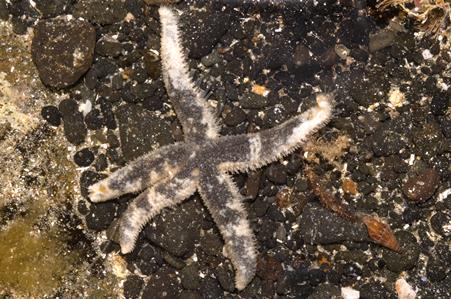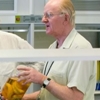General Description
Arms 5, not readily lost if disturbed. Body pattern mottled reds and cream. Centre to arm tip up to 4 cm.
Biology
This species reproduces sexually, but the females brood embryos and juveniles in the stomach, up to 300 in a single female. Tube feet transfer the eggs or embryos from the gonopores on the sides of the arm into the stomach. It is not known where the eggs are fertilised. The young seastars are released with about 1 mm long arms, into rocky shallows in Spring. An Arctic seastar is the only other species with this capacity for gastric brooding.
Habitat
Lives on the under-surface of basalt rocks, to depth of 3 m.
Reefs
Distribution guide
Tasmania and Victoria.
Species Group
Seastars and allies › Sea stars
Depth
Shore (0-1 m)
Shallow (1-30 m)
Water Column
Max Size
8 cm
Diet
Carnivore
Commercial Species
No
Global Dispersal
Native to Australia
Identify
Conservation Status
- DSE Advisory List : Not listed
- EPBC Act 1999 : Not listed
- IUCN Red List : Not listed




